Now it’s time for my semi-periodic stand-up-on-your-hind-legs blog. I promise, this will be the last one and should sate you through the remainder of my career as an aviation opinion writer. What ignited it this time was the proximity of Sun ‘n Fun starting Tuesday and this video, a link to which someone must have sent me but who knows, because like everyone else, I bob along in a river of digital content barely keeping my nose above pixel level.
The gist of the video is half revealed in the grammatical fracture of the title: Why Plane Crashes at Oshkosh Every Year. The author then presents the argument that crashes at Oshkosh—and there are often a small few—are “caused” by air traffic controllers yelling at or pressuring pilots, distracting them from the delicate task of landing the airplane. He observes that nine times out of ten, crashes occur on the runways at Oshkosh or Lakeland, then leaps to the conclusion that ATC is responsible. Well, yeah, most crashes in general occur on runways because that’s where the vast majority of pilots meet mother earth and all too often, we screw it up. R-LOCs, we call them, for runway loss of control. They often bend metal, sometimes badly, but rarely fatally.
There’s a kernel of truth to the assertion that high-octane ATC at Oshkosh and Lakeland are factors, but no matter how much you water that seed, you’re not gonna get a flower. The reason is that short of running two airplanes together, controllers are but facilitators and, as it always has, 91.3 rules. The full text is mercifully short: “(a) The pilot in command of an aircraft is directly responsible for, and is the final authority as to, the operation of that aircraft.” The emphasis is mine. Just as an aside, while the intent is clear, this sentence could use a rewrite. But that’s for another day.
In this context, PIC authority extends beyond the mere manipulation of the controls and to the concept of what it means to be in command. It means knowing the NOTAM, for example, being prepared to confidently fly at varying airspeeds, including slow flight, and executing tight turns at potentially low altitudes, short-notice go-arounds, plopping the airplane down on a designated spot and tuning out hectoring radio transmissions from the tower. In the opening of the video, there’s a particularly egregious example of a controller badgering the pilot unnecessarily at length and advising him to “add power.” Excuse me, as my friend Ross Russo likes to say, rock the tower if you’re flying the airplane. Video author Mike Ojo rightly points out that this may be a factor in some runway mishaps and that controllers working this way add unnecessary agita and tension to the exercise. I agree, but it’s not causative. Being in command means having the chops to ignore that noise and carry on with being the final authority.
The word “unable” is always available when safety or capability are in question, even if you can’t say it on a frequency that’s permanently hogged by a controller holding the PTT. Have the confidence to do what’s necessary to resolve the situation safely and worry about the consequences later, of which there are likely to be none. In the video, the controller commands a Bonanza pilot twice to “put it down.” This is a perfect recipe for a porpoising or gear collapse accident and the only thing between that and salvation is the pilot’s discipline to put the airplane down when it’s damn well ready to quit flying. And not before.
What appears to be going on in that situation is the kind of too tight spacing that happens all the time at AirVenture and Sun ‘n Fun. It’s not clear why it happened. It could be one of the pilots turned sooner than he was supposed to or flew faster than he was supposed to or maybe the controller called the turn too soon or otherwise messed up the sequence. It happens. Remember, at AirVenture, controllers are allowed to use non-standard runway separation so it’s not a question of if this will happen, but when. It’s understood that a cooperative relationship between controllers and pilots will sort this stuff out. To a point.
If you deem an ATC directive—say a last-second go-around or a low turn—will put the airplane in extremis, 91.3 authorizes you to do what’s necessary to save it, regardless of the directive. It’s not blanket immunity, of course. If you turn left when the controller said right or taxi onto a runway you weren’t cleared to enter, 91.3 won’t save you. And there are gray areas between that and a righteous decision to decline a directive.
Performance anxiety plays a role here, too. Pilots sometimes assume, wrongly in my view, that speed-of-heat radio transmissions equate to Olympic-level ATC. Sometimes yes, sometimes no. But there’s an understandable desire to perform heroic feats of airmanship to measure up to the imagined high expectations of controllers and, possibly, an audience.
In 2001, an acquaintance of mine was on final to Runway 9 at Oshkosh in a Glasair III when he was asked to fly S-turns for spacing. He did, and slowed down to the extent of entering a stall/spin. He died in that crash for the simple want of rejecting a directive he couldn’t safely execute. In 2010, famed racing figure Jack Roush was seriously injured when he stalled his Premier jet after a late go-around on runway 18R. He believed he would conflict with a slower airplane just departing, but applied inadequate power for the go-around, resulting in a stall. Roush exercised his PIC authority, but simply failed to follow through to completion.
Oshkosh (or Lakeland) is no place for tentative, half-step execution. Know that going in. And remember to expect the unexpected, because you’re kind of likely to see it. Also, accept that with that many airplanes stuffed into a small space, risks are simply higher. Period. If that doesn’t sit well—and it surely doesn’t with many pilots—driving is a lower stress option. Heresy, I know, but better that than a bent airplane.




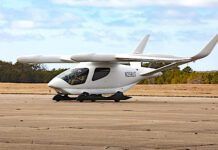
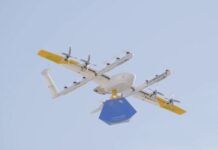
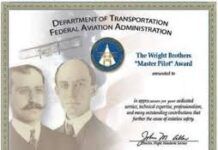


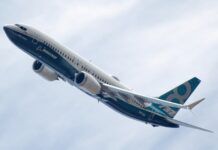
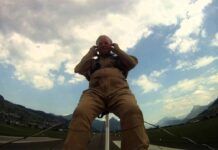

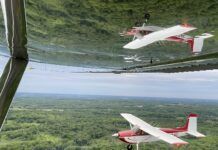
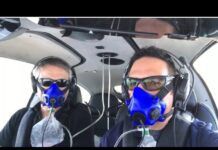
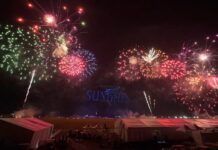
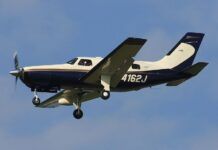

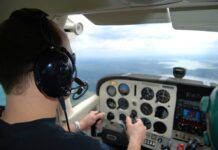

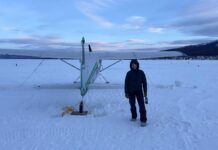

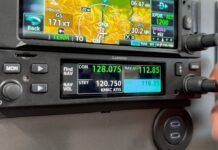
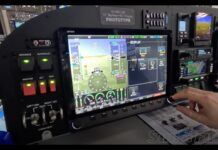



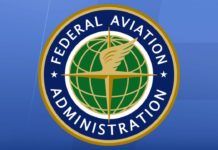

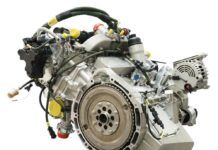

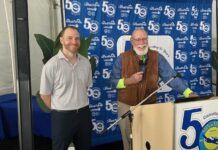


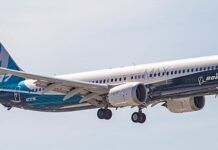


Would love to join you, but as they say, “unable.”
Have a great time!
Paul, although you would state it in a more prosaic manner, I’ll just say: Thanks for the reminder — it’s one that all pilots need to hear regularly.
I’ve always hoped that I would bump into you at past SnF’s just to say hello — maybe this will be the year. I think I know your views about covering these big events, so hopefully you’ll make it through this one without too many ill effects. Best of luck in that effort!
We’ve all heard “When you can’t do it, just say ‘unable'” or “If you need to, declare an emergency”, but I have found that the majority of pilots don’t get enough practice in actually using these words. I discovered this many years ago when I was in a Red Bird simulator and for the first time ever spoke the words “declaring an emergency”. It was just a simulator, but it actually tingled my spine saying it, because I never had done it before. It was from then that I decided as an instructor, I would actually make my student say those words during a flight review or initial training (to me as fake ATC, of course, and not on the actual frequency). Same thing with using “unable”.
We talk about pilots not getting enough practice with go-arounds, but I think equally important is practicing saying rarely-spoken words out loud. And including some training in how to analyze the current situation to know when saying those words is appropriate. Reading about it isn’t good enough; you have to actually experience it (preferably in a safe and controlled environment).
Unable is the key learning point here – I shot an approach at 120 knots b/c ATC told me there was faster incoming traffic behind me – I shoulda said ‘unable’, vector me around and I’ll try it again.
As for this person’s video, there is one good comment from a viewer:
ACT at Oshkosh could have said: “Lancair land after the yellow dot, faster traffic behind you” – succinct while giving context to the pilot as to what is needed/expected of him or her. Micro-managing a pilot by just repeating keep going keep going is not helpful – good post, Paul.
This little story is a reminder of exactly what Paul says. The pilot is pilot in command and sometimes we must send the message. I was on an IFR flight plan flying through NY airspace on a day when the weather went to crap. One of the vectors had me on a bee line to a sizable thunderstorm cell displayed on my storm scope. The controller was doing yeoman’s work sorting out all the traffic lining up for approaches to KLGA, KJFK and KEWR and there was no break in the constant flow of his commands. I could not get a word in edgewise. When that thunderstorm penetrated my 25 mile no go ring, I turned left 20 degrees. Within minutes, the controller picked up the turn and called “80H what are you doing?”. My response, “I’m deviating for thunderstorms”. His response, “don’t do that sir, don’t do that”. My response, “my next word is the E word”. His response, “Ah 80H, turn left to course ….”. Message sent, Message received.
“Unable” is my favorite word in the English language. Also, there’s an old aviation adage that goes “I’ve heard of lots of pilots getting killed in thunderstorms while flying, but I’ve never heard of a controller getting killed in a thunderstorm.” You, sir, did exactly what I’d have done in those circumstances. Well done.
“driving is a lower stress option. Heresy, I know, but better that than a bent airplane.” Best advice!
Paul, your reminder to act as PIC goes against the culture of today which is to do WHATEVER a government official tells you to do and that nothing is ever the fault of the individual. Whatever happens it’s all ways someone else’s fault. Personal responsibility is a relic of the past unfortunately.
SoCal TRACON (SCT) covers an area from the US/Mexican border to 20 miles north of Burbank and from Palm Springs to Santa Catalina Island. SCT’s airspace includes 2 Class B airports, 4 Class C, 4 Class E, 22 Class D, and 16 Class G terminal areas. Then there are the Restricted, MOAs, and Special areas all making for really fun flying into low-altitude airspace. As a flight instructor, I frequently gave SCT familiarization flights to foreign and out-of-state pilots. Some pilots vividly expressed their excitement, during and after the flight. I understood their thrill even after flying there for some 56 years. It just doesn’t get old.
I am thankful that I learned to fly at SoCal’s KTOA (Zamperini Field), during a busy GI Bill flight training era back in 1966. The airport tallied about 340,000 operations annually. The nearby airports were quite busy as well, all making for a demanding VFR/IFR challenge on just about any day. No GPS, no ADS-B. One had to be very familiar, a quick study, to fly the thing, navigate, keep up with traffic, and comply with ATC assignments. After the learning process, flying from SoCal to non-towered airports outside the TRACON area and back was not as much of a problem for many of us. But for out of the region’s unfamiliarized pilots, especially low-time pilots unaccustomed to rapid communications, or high traffic density complicated airspace, SOCAL’s TRACON complexities were and continue to demand a strong assortment of skills. A handful at times. Oshkosh and Sun-n-Fun may be as much fun as well. Don’t forget to be PIC, but if not competent take a bus or drive.
Raf. I’m a TOA graduate myself, learning in Aeroncas and Tri Champs beginning in ’58 with Collins and Dietrich. Continued to fly out of there until leaving the area in ’76. And I used the VA bill to get many of my ratings. But I was additionally and controller at ZLA for all the airspace you mentioned and then a controller at LGB during the VA heyday or activity. I got to see it and understand it from both sides. You’re right. No place like it. Having grown up in that, I was totally comfortable anywhere I later flew went.
👍
‘We talk about pilots not getting enough practice with go-arounds, but I think equally important is practicing saying rarely-spoken words out loud.’
You’re on to something there. It’s called the ‘production effect’, and helps to stick word meanings into the long-term memory better than just mental visualization. Many groups the world over use this technique, Japanese drivers of the Shinkansen come to mind. Music, poetry, art and other visualization readings and methods also are instrumental for planting a long-term memory garden. It’s keeping the weeds and critters of aging out that can become a challenge, they tell me…
Hoping for good weather and safe flying for ya’ll at the Little-Big Air Show there in Fla. This grey head doesn’t do long car or homebuilt flights much anymore. Like a burger and fries, Delta and a car usually are what I use for crossing our beautiful country nowadays.
“Planting a long-term memory garden.”
Vivid poetry on a sunny Sunday morning.
Ah, memories. All flights are flown twice, once in the air and the other in the mind. Wheels up!
Dave, YARS, talking about poetry, I just read this; “Life isn’t about how to survive the storm, but how to dance in the rain.” V1 y’all!!
PIC should be that (in command) and “help” should arrive without the need for quotation marks.
Sitting at the hold short this weekend, was cringing watching a tail dragger swinging on rollout, glad he had an instructor onboard when tower told him to exit “no delay” for my takeoff…again, glad he had the instructor to keep the pace safe…and “no delay” for my takeoff was clearly overkill for any mission I fly. Though tempted to key the mic to relieve pressure on the student, it would not have helped the student or got thru to that controller who is of the speedy delivery and less speedy thought process…but I probably do owe the tower manager a call.
In my m 9u nd this is a clear case the uses(pilots), having to adapt and put their livves at risk because of a piss poor system devised by authorities. All too often in our lives we are forced to comply with poorly devised government written procedures that put the onus on us rather than them. Them being the “authorities “. It is one thing to have to jump through hoops at the motor vehicle registry or the IRS or many other government run agencies but it’s an entirely different scenario when it comes to having to comply with an authority that puts lives at risk. My story is this. As a student pilot on his second solo, stupidly planned by my egotistical instructor on a busy Friday at busy Hanscom Field at four thirty in the afternoon with the pattern filled with arriving traffic of all types. On final the tower call for me to go around, at low level mind you, and to use the other runway, the crosswind runway. So automatically I am freaked because of the go around and doubly freaked because now i have to land in a crosswind . This controller knew I was a student because the flying club had three trainers that flew constantly and should have known better, but vectored me anyway to the crosswind. Stupid and possibly life threating to me the student. All because some jet jockey had , just had to land. I’m lucky I survived that “authority ” demanded order. I wasn’t taught the ” unable” procedure by my instructor and this incident wasn’t the first time he made me fly an unsafe procedure. I fired him and got a better instructor.
Not only at the big two but many flyin events I found the pilots attending seriously lacking in skills and judgement. It appears and this is just an opinion that many don’t fly much except to go to an event. A pilot with a couple of flights in the last 90 days will be overstressed in a high density environment and likely to have an accident or cause other issues. Also like your friend who died in the homebuilt there may be a tendency to submit to an directive from ATC to do something they may or may not be aware of that is beyond the pilots or planes capabilities. Just say unable and the controllers must figure something different out. When I went to Airventure in 2019 we drove because the plane had issues. Turns out between the massive storms and insane traffic arriving it was the right choice. We stayed off the field and were able to have showers, AC and shelter. We got to the show at 7:00 AM every morning, had breakfast and spent the day there. It worked out well.
Despite the provocative title and conclusion of the linked video (Why Plane Crashes At Oshkosh Every Year), you seem dismissive of it, whereas I thought it had a valuable message – flying into Oshkosh is (a) stressful, (b) requires procedures outside the norm for most attendees (spot landing, last minute instruction to defer touchdown very close to the runway in the landing configuration), and therefore would benefit from very specific prior preparation and practice, and that what exactly to practice may not be as well documented/promulgated as it might be. Not to mention standardized, promulgated phraseology for extending.
I have only flown to Oshkosh a couple of times, but I will concur that eagerness to please (ATC, crowd) is another huge factor adding pressure and interfering with disciplined, logical decision making.
I practiced the crap out of spot landings before each visit, as well as landing at different positions down the runway other than the threshold, but it did not occur to me to find a longer runway and practice deferring the touch down for last moment “dot changes” at various different heights and configurations (above and within ground effect, trim and flap settings).
Another skill it turned out I needed was a 360 at low altitude on very short final due to a surprise conflict at the last minute, when landing unplanned in a formation was not a great idea. Hadn’t practiced that much either, though I have occasionally gotten similar requests from the tower in real-life (non-Oshkosh) scenarios. In retrospect, I should have gone around that time.
I also worried about going around at Oshkosh – the sky is crowded, it breaks the rhythm, and what if that faster guy behind me decides to do the same? Going around may seem intuitively to be lower risk, and familiar, but so might landing shorter than commanded and letting the aircraft in trail go around. I recall it was hard to maintain situational awareness of everything behind you, as well as in front and to the sides, and a very high level of trust in the controller’s plan and willingness to respond quickly to instructions was required (thinking fast vs. slow mode dilemma).
When others have asked me what it’s like to fly into OSH (or LAL, although I haven’t flown into there), I always say, “fly like you were taught to fly”. Yet each year that I go to OSH, I see pilots who clearly aren’t flying how they were taught. When traffic is using 27 and they use 9, when they’re told to use 36R and they land on 36L, when they’re told to exit onto the grass but they taxi down the runway to the next hard surface taxiway, when they fly much faster than reasonable approach or landing speed, or much slower than the approach speed for their aircraft, they’re not flying like they were taught. One really nutty example I recall from several years ago: a 172 attempted to lane on 27 at close to cruise speed. He didn’t touch down until the last thousand feet or so, and from the smoke from the tires, I suspect they were worn almost through the last layer. The airplane stopped so close to the end of the runway that he and his passenger had to get out to push it back—not enough room left to turn around. I suspect that was not the way he was taught!
I watched his entire OSH landing video, and the one prior to this one, showing his arrival into OSH. Here is my comment on his YouTube Channel:
Ok. I’ll be “that guy”. My intention is not to throw shade, but to make this a teaching moment. I’m basing this on your two Oshkosh arrival videos (this one and the “1000 miles to Oshkosh in bad weather” video).
Oshkosh is a demanding environment. 200 feet high on base leg is not acceptable (see your 1000 miles to Oshkosh in bad weather video). And while I can’t see your airspeed indicator, I see it moving while you are on base leg – a lot. Again, not acceptable. The arrival requires you to be on airspeed and on altitude the whole time. If you slow down early, which I suspect you did when you added flaps on the long base leg to runway 36L, the Bonanza traffic behind you (which was flying the published speed) caught up to you. You could have prevented this whole exchange by simply flying the published speed until landing was assured.
Your situational awareness was not where it needed to be for this arrival. There was no one landing directly in front of you so there was no need to slow to the point the stall warning was chirping before you crossed the threshold (and it kept chirping) with several thousand feet remaining to fly. And you should have heard on the radio there was a flight of two Bonanza’s (faster landing speed than you) behind you. It is not enough to just fly YOUR plane during the OSH arrival. You need to pay attention to what is going on around you.
In this video you claim you were approaching the yellow line (sic) when you were told at the last second to fly down the runway. That’s incorrect. Re-watch the video. You were lined up to land on the purple dot (the first dot on the runway) and the controller saw that and told you to keep it in the air before you even crossed the runway threshold – long before you got close to the ground. Don’t see the yellow dot or know where it is? That’s on you – its location is printed in the NOTAM so you should have known it was 1/2 way down the runway (with 3,400 feet of pavement remaining beyond it). You should have planned your approach & glidepath accordingly and not aimed at the “normal” landing zone (where the purple dot is). This is Oshkosh. The rules are different. Read the NOTAM.
You were cleared to land on the yellow dot which you did not hear (the other pilot did) despite being told a couple of times, way back when you were on base leg, indicating you were task- saturated. The instructions on where to land were NOT changed at the last second, as you claim. In fact, the landing instructions were NEVER changed. It was ALWAYS land on the yellow dot. When it appeared to the controller (and to me watching the 1000 miles to OSH video) that you were going to land short of the yellow dot (near the purple dot) with Bonanza traffic closing on you from behind he began to raise his voice and “fly” your airplane for you and save the day. And despite being told repeatedly to fly down the runway (and toward the yellow dot), I believe you STILL landed short of the yellow dot. Neither video shows the touchdown. Perhaps you can post the landing and prove me wrong.
Oh, and you claim that “9 out of 10 times” crashes at Oshkosh are due to these last minute controller instructions? B.S. Each accident has its own cause. And I would bet “controller instructions” are never among them. On this day, the controller’s instructions got you out of a situation of your own making and saved your a$$. Credit where credit is due.
In my opinion, you were not fully prepared to fly this very demanding arrival. I encourage you and anyone else interested to watch your arrival videos again with the Oshkosh 2021 NOTAM in front of you. Be humble, learn, from it, & move on. I’m sure you’ll do better next time. Hope to meet you at OSH 2022!
I looked at the video. It looked good to me. Kept two Bonanza from running up the RV’s butt. The controller even thanked the RV guy for his help. The alternative would have been for the controller to send the RV around when it was realized that the RV was going to land way short of where he was instructed to land. Yea, the controller was flying the airplane partially through his instructions, but as the article says, if unable, say so and do what you must do….and have the two Bonanzas go around at the last minute. Oshkosh and SnF are complex environments. They require slightly advanced piloting skills over just the basics. If you don’t have those and don’t feel comfortable with the activity, including the controllers, as mentioned do drive to the events. Again, controller no fault, pilot fault….my opinion.
Did anyone else read this and hear Paul’s voice?
Ayup.
While you were in that digital river, did you see any diesel engines going by?